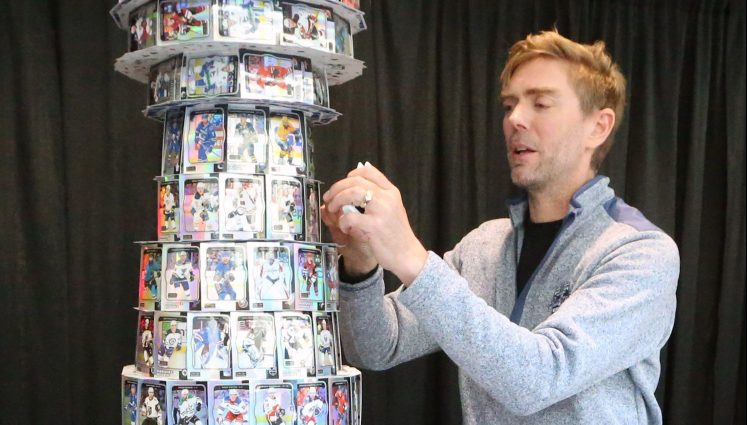
The Most Memorable Hockey Card Promotions
By Distributel
Hockey cards are having a moment. Thanks to a more managed supply of cards, fans who grew up during the late eighties and early nineties hockey card boom who now have disposable income, and unboxing videos on YouTube, hockey cards are more popular than ever. But they’ve had a lot of big moments in their one hundred plus year history, so here’s a look back at some of the most famous hockey card promotions.
Imperial Tobacco Canada’s Illustrated Cards
From 1910 to 1913, Imperial Tobacco Canada would put hockey cards in their cigarette packs. This wasn’t just the first hockey card promotion. In fact, these 36 illustrated cards were the first hockey cards of any type produced. Pictures, illustrations, and lithographed images printed on cards were a standard promotional tool for tobacco companies around the turn of the century, with celebrities, famous landmarks, new inventions, and models all serving as common subjects. But Canada was nuts for hockey, so fans could get their hands on images of the greats such as Fred “Cyclone” Taylor, Art Ross, Newsy Lalonde, and Georges Vezina. That’s right, the guy for whom the Vezina trophy is named.
After the initial three-year promotion, the world saw no more hockey cards produced until the 1920s, when they were made for yet another cigarette promotion. It wasn’t until the thirties when a chewing gum company called O-Pee-Chee started making cards, and people could just buy the cards by themselves. With some gum, of course.
Esso Power Players
During the 1970-71 hockey season, kids would insist their parents buy gas at Esso. Why? Because with gas purchases, you could get a set of six miniature hockey cards. Each was about an inch and a half tall and could be pasted in a book you’d get with your first purchase. There were 252 to collect in total, 18 per team.
Aside from the simple joy of collecting, the Esso Power Players series became a big deal for many reasons. The biggest was that they were the only cards featuring in-game action shots of players. Other hockey cards used posed shots at the time, so if you wanted to see Gerry Cheevers in the net, you’d have to get a Powerplayers card. They were also up to date, featuring players in the new expansion teams, Vancouver and Buffalo. They even had pictures of the Leafs in their new uniforms before anyone else.
Mid-Nineties McDonald’s Hockey Cards
In between doing the Bart Man or checking on your Tamagochi, a Canadian kid in the nineties (assisted or enabled by their hockey-obsessed dads) could hit up McDonald’s and load up on hockey cards. These weren’t giveaways, though. For a few weeks every summer, every order of large fries entitled you to buy packs of hockey cards. Not that having to buy cards ever dissuaded anyone—in fact, McDonald’s would set limits on how many packs of cards you could buy per order, leading many to test their French fry limits.
Upper Deck made the first round of Mcdonald’s cards and seem to have made the lion’s share of cards still on the trading market, but Pinnacle and Pacific both made cards at various points.
The extra genius of this promotion was that each pack not only had the possibility of rare cards but the chance to win unique large format cards, sticks, signed memorabilia, and more. In some years, you could trade in completed sets for other memorabilia. Some restaurants even held card trading nights, so you could bring your extras in and try and trade them for a complete set.
Tim Hortons Cards
Appropriate that a coffee chain founded by and named after Tim Horton is re-igniting love for hockey cards. In a promotion much like the one spearheaded by McDonald’s in the nineties, you can buy cards in-store, sometimes with the change from your Timbits purchase. But the 2020 spin is that you can also use the Tim Hortons app to scan cards, get digital cards, and enter contests for the chance to win stuff like coffee for a year, an NHL streaming subscription, and a chance to go to the Stanley Cup final.
